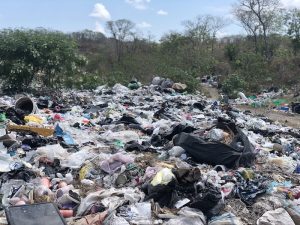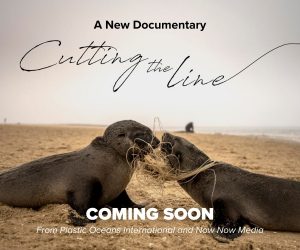Vulnerable Communities Limited In Their Ability to Protect Themselves
In a conclusive environmental justice report, published in late March, the UN Environment Program (UNEP) has declared that plastic pollution affects marginalized groups to a much more significant extent than it does other populations.
By analyzing plastic pollution as well as various processes inherent to plastic production, such as deforestation and fracking, the study — titled Neglected: Environmental Justice Impacts of Plastic Pollution — found that “the impacts of plastics on marginalized populations are severe.” Moreover, it exhibited that “these impacts exist at all stages of the production cycle, from extracting raw materials and manufacturing, through to consumption and disposal.”
In one particular case study, the report “warns of health problems among African-American communities living near oil refineries in the Gulf of Mexico.” In another, it cites “the occupational risks faced by some two million waste pickers in India” — the majority being women, who already face high plastic-related toxicity risk “due to higher aggregate exposure to plastics at home and even in feminine care products,” which puts them at higher risk of miscarriages and cancer.
The study’s authors also stress the impact of plastic pollution on coastal communities, whose fisheries are being depleted in large part due to increased waste in the ocean. Given their reliance on fresh fish, this disproportionately affects coastal indigenous peoples — a demographic that has chronically suffered the consequences of first-world economic expansion.

Lack of waste management infrastructure often results in unauthorized garbage disposal in Mexico’s Yucatan Peninsula.
“‘Development’ is not universal,” says Pedro Uc, an indigenous Mayan activist and member of the land rights defence organization Múuch’ Xíinbal. “It is driven by economic vested interests and leaves marginalized groups in its wake. We’re continually being sold the supposed virtues of economic development, when really all it has done is displace us from our ancestral lands, contract members of our community for an inhuman wage, and — all too often — pollute our land and air, because as far as capitalism is concerned, we continue to be non-people.”
What’s worse, marginalized communities like Pedro’s are limited in their capacity to protect themselves — an issue exacerbated by the fact that they are not the ones primarily responsible for perpetuating these issues in the first place. According to a study conducted by Oxfam International and the Stockholm Environment Institute, that analyzed global carbon emissions from 1990-2015 — a critical period during which global emissions more than doubled — “the richest one percent of the world’s population [were] responsible for more than twice as much carbon pollution as the 3.1 billion people who made up the poorest half of humanity.”
Further — and thinking specifically about plastic generation — the US, UK and Germany make up only 6% of the world’s population, but generate 21% of global plastic waste per year.
With that, to call climate change “the great equalizer” would vastly misrepresent the reality of the crisis, because in general those most responsible for causing the problem are those best positioned to avoid its inherent consequences.
“The global carbon budget has been squandered to expand the consumption of the already rich, rather than to improve humanity,” says Tim Gore, head of policy, advocacy and research at Oxfam. “A finite amount of carbon can be added to the atmosphere if we want to avoid the worst impacts of the climate crisis. We need to ensure that carbon is used for the best.”
As Gore stresses, something needs to change. But when so much seems to be broken, where do we start?
“It has to be a bottom-up rebuild,” says Julie Andersen, CEO of Plastic Oceans International. “First, this means constructing a foundation of community-based movements and facilitating relationships so that we can better understand the unique challenges that different communities face. After developing these connections, we can learn how to empower one another to become sustainable economically, socially and environmentally. Only with multi-strand connectivity can we achieve not only strong environmental change, but also meaningful social justice.”
The two issues, of course, are inseparable. To cite one of innumerable examples, a recent study conducted in the US found that “African Americans are exposed to 38 percent more polluted air than Caucasian Americans,” and are “75 percent more likely to live in fence-line communities” — those adjacent to industrial facilities whose noise, odor, traffic, or emissions directly affect the population. It is no surprise, then, that African Americans demonstrate disproportionate rates of asthma and other pollution-related health issues as compared to Caucasians. Combine this with the fact that African Americans face significant racial disparities in accessing and receiving adequate healthcare, and there you have structural socio-environmental injustice in a nutshell.
This example underscores the interconnectedness of many of the major issues facing society today. In reality, socioeconomic disparity and racial justice and women’s rights and global literacy and plastic pollution are not separate issues, but merely different manifestations of the same antiquated global system — one that survives on systemic inequality. It is clear that these concepts cannot be divorced from one another if we are to truly take steps forward and shift our existing, self-destructive paradigm.
If we have the courage to make this shift — not just reducing our emissions, but confronting our biases, reframing our perspectives, and rebuilding the very fabric of our societies — our greatest crisis could end up becoming our greatest opportunity. And remember … there is no justice without environmental justice.
Isaiah Maynard is a US-based writer who covers environmental topics for a variety of publications and is part of the Environmental Journalism team at Ninth Wave.

